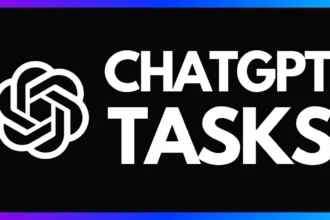Understanding the Major Cost Components of Running LLMs
Ah, the world of Large Language Models (LLMs) – where the cost of running them can sometimes feel like a mystery wrapped in an enigma! 🤔 But fear not, for I’m here to unravel the complexities and shed some light on the major cost components involved in operating LLMs.
Let’s embark on this budgetary exploration together, shall we? Buckle up as we delve into why LLMs can be quite the pricey companions on your AI journey! 💸
Understanding the Major Cost Components of Running LLMs
So, why do these LLMs burn a hole in your pocket? Well, there are several factors contributing to their expense. From creating these marvels of AI to paying for their usage, there’s a lot going on beneath the surface. Let’s break it down step by step:
The Cost of Creating LLMs Creating these language models isn’t just about a stroke of genius; it also involves significant financial investments. Training an LLM involves GPU costs that can reach millions! Additionally, cleaning data and undergoing hours of human feedback are all part of the game. While you may not train your own LLM from scratch, indirectly paying for these creation costs is still on the table.
Paying for Using LLMs When it comes to using LLMs, you typically face two pricing models: paying by token or hosting your own model. Paying by token means shelling out based on data processed, while hosting your model puts the infrastructure burden on your shoulders. It’s a classic case of convenience versus control – choose wisely!
But hold up now… The journey doesn’t end here! Let’s navigate through hosting an LLM on cloud and paying per tokens while keeping an eye on those sneaky hidden costs that love to surprise us at every turn.
Curious about what lies ahead? Want to uncover more about taming the expenses tied to LLMs? Then read on revelers and knowledge-seekers; adventure awaits beyond every paragraph! 🚀
Table of Contents
ToggleComparing LLM Training Costs: GPT-3 vs. GPT-4
Comparing LLM Training Costs: GPT-3 vs. GPT-4
When it comes to the cost of training Large Language Models (LLMs), it’s a ride into the world of financial rollercoasters! We’ve heard tales of millions spent and wallets weeping when looking at the expenses involved. Let’s dive into a comparison between two heavyweights in the LLM arena: GPT-3 and its more advanced successor, GPT-4.
First off, let’s address the elephant in the room – training costs. Back in 2020, when OpenAI birthed GPT-3 with its 175 million parameters, cloud provider Lambda hinted at a hefty bill exceeding $4.6 million just for training this powerful model. The numbers speak volumes about the pricey nature of developing these AI marvels.
Now, fast forward to the realm of GPT-4. This new kid on the block is touted as ten times more advanced than its predecessor, GPT-3.5! With enhanced capabilities to grasp context and nuances for crafting coherent responses, this upgrade promises a whole new level of AI sophistication – but at what cost?
Enterprising individuals have crunched numbers and come up with enlightening insights into comparing models like GPT 3.5 with its successor, GPT-4. It’s like choosing between that affordable yet reliable old car and splurging on a shiny new luxury vehicle; each offering varying levels of performance but coming with distinct price tags.
As you navigate through this journey of comparing LLMs like GPT-3 and GPT-4, keep in mind that size matters here! The sheer magnitude of an LLM impacts both its effectiveness in generating accurate results and the dent it puts on your wallet (ouch!). Upgrading from a model like GPT-3.5 to the more sophisticated GPT-4 can give you that edge in accuracy – but be prepared for escalated costs lurking around every corner.
Imagine standing at a tech carnival where tokens are your currency; smaller models might seem like those kiddie rides while upgrading to models like GPT 4 is akin to boarding that adrenaline-pumping rollercoaster – thrills await but so does the ticket price!
So buckle up and keep those calculators close because we’re about to embark on an exhilarating cost comparison spree between these behemoths of AI language models.
Managing and Optimizing LLM Costs
In the realm of Large Language Models (LLMs), understanding the intricacies of costs and implementing effective management strategies can be the key to unlocking their full potential while maintaining financial sustainability. Two primary pricing models emerge for LLM usage: paying by token or hosting your own model. Paying by token means costs are based on data processed, while hosting your model gives you control but requires significant investment and maintenance.
Hidden costs in LLM applications, such as varying input/output sizes and additional API calls, can catch you off guard during production deployment, emphasizing the need for robust cost management strategies. So why are LLMs so expensive? Well, creating these advanced language models involves various components that contribute to their costliness. Let’s dissect these factors one by one:
LLMs have evolved to store data in embeddings, compressing media types for enhanced search capabilities. However, creating and querying embeddings come with additional expenses that can add up over time. Controlling LLM costs involves strategic approaches like investing in advanced GPUs for improved speed, efficiency, and cost offsetting.
When it comes to managing LLM expenses, balancing size, accuracy, and cost is crucial. Larger models usually offer higher accuracy but at a steeper price tag. Quantization is another technique worth considering – reducing precision while maintaining performance can strike a cost-effective balance.
Fine-tuning LLMs for specific tasks not only enhances performance but also optimizes resource usage efficiently. By customizing these language models tailored to your needs, you can make the most out of them without breaking the bank.
So buckle up as we navigate through the world of managing and optimizing LLM costs; it’s a wild ride where strategic decisions can lead you to AI success without draining your budget completely! 🚀
- Training LLMs involves significant financial investments, with GPU costs reaching millions and extensive data cleaning and human feedback.
- When using LLMs, you can opt for paying by token or hosting your own model, balancing between convenience and control.
- Hidden costs can sneak up on you when hosting an LLM on the cloud or paying per tokens, so stay vigilant!
- Comparing training costs of different LLMs like GPT-3 and GPT-4 can be a rollercoaster ride into the world of financial complexities.





